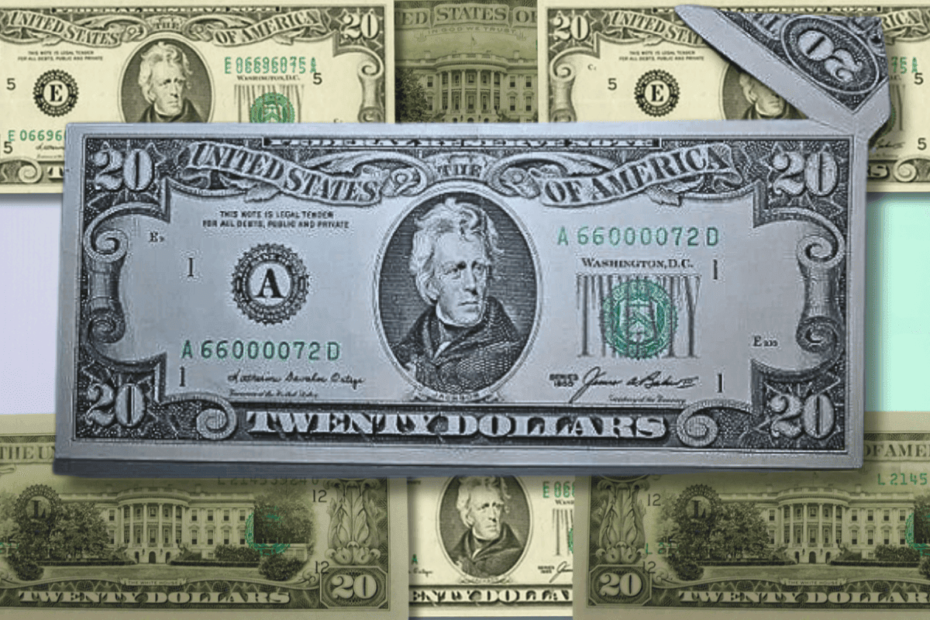Unveiling a Currency Collector‘s Passion
Imagine holding a seemingly ordinary $20 bill that could be worth thousands. As a seasoned currency collector with decades of experience, I‘ve learned that every piece of paper money tells a remarkable story – and the 1985 $20 bill is no exception.
In the world of numismatics, what appears mundane can transform into a treasure that captures the imagination of collectors worldwide. The 1985 $20 bill represents more than just currency; it‘s a snapshot of technological precision, human error, and the intricate dance of printing technology.
The Birth of a Collectible: 1985 Monetary Landscape
The mid-1980s were a fascinating period in American monetary history. Ronald Reagan was president, the Cold War was approaching its final chapters, and the Bureau of Engraving and Printing was perfecting its craft of creating secure, sophisticated currency.
When the 1985 series of $20 bills rolled off the presses in Washington D.C., few could have predicted the hidden gems that would emerge decades later. The total production run was staggering – nearly 7 billion notes circulated, each one a potential canvas for rare printing anomalies.
The Anatomy of Monetary Perfection and Imperfection
Every currency note is a complex symphony of design, security features, and precise printing techniques. The 1985 $20 bill featured the iconic portrait of President Andrew Jackson, a design that had remained relatively consistent since 1928.
What makes certain notes from this series extraordinary are the microscopic variations – tiny errors that transform an ordinary bill into a collector‘s dream. These variations aren‘t just random mistakes; they‘re windows into the intricate manufacturing process of currency.
The $6,900 Error: A Numismatic Marvel
The most famous error from the 1985 series is a note that sold for an astounding $6,900 in 2005 – a testament to the unpredictable world of currency collecting. This particular bill featured a bizarre printing anomaly where two note centers were merged sideways, creating a visual puzzle that defied conventional printing logic.
When I first examined this note, I was struck by its unique characteristics. The purple "No Value" stamp from the Bureau of Engraving and Printing only added to its mystique. How did this error escape initial quality control? What series of mechanical and human interactions allowed such a remarkable mistake?
Understanding Printing Errors: More Than Just Mistakes
Printing errors are not mere accidents but complex interactions between mechanical systems, human oversight, and split-second manufacturing decisions. In the case of the 1985 $20 bill, errors could occur during multiple stages: initial printing, overprinting of serial numbers, alignment of design elements, or final cutting processes.
The Star Note Phenomenon
Star replacement notes add another layer of complexity to the 1985 series. When a printing error occurs in a standard production run, the Bureau uses star notes to replace the damaged sheets. These star notes, marked with a small star next to the serial number, are inherently rarer.
Of the 36,480,000 star notes produced in 1985, only a fraction maintained pristine condition. Collectors like myself understand that rarity isn‘t just about quantity, but about preservation and unique characteristics.
The Economic Ecosystem of Currency Collecting
Currency collecting is more than a hobby – it‘s an intricate economic ecosystem. The value of a note isn‘t determined solely by its age or rarity, but by a complex interplay of factors: condition, printing errors, historical context, and collector demand.
A note graded as Gem Uncirculated (MS 65 or higher) can command prices exponentially higher than its face value. The 1985 $20 bill series demonstrates this principle perfectly, with some error notes selling for thousands of times their original monetary worth.
Forensic Analysis: Reading the Silent Stories
When I examine a note, I‘m not just looking at paper and ink. I‘m reading a silent narrative of technological precision, human craftsmanship, and potential imperfection. Each serial number, each microscopic variation in color or alignment, tells a story.
The 1985 $20 bill series offers a perfect case study. With twelve different Federal Reserve bank varieties – from Boston to San Francisco – each note carries its own unique identifier, its own potential for becoming a collector‘s prize.
Beyond Monetary Value: Cultural Artifacts
These notes are more than financial instruments. They‘re cultural artifacts that reflect the technological capabilities, design aesthetics, and economic realities of their time. The 1985 series captures a moment in American monetary history – a bridge between traditional printing techniques and emerging security technologies.
The Future of Collectible Currency
As we anticipate the redesign of the $20 bill, featuring Harriet Tubman, the 1985 series gains even more historical significance. Collectors are already preserving these notes, understanding their potential future value.
A Personal Reflection
After decades of collecting, I‘m continually amazed by how a simple piece of paper can hold such extraordinary stories. The 1985 $20 bill, with its potential for rare errors and unexpected value, embodies the magic of numismatics.
To the untrained eye, it might seem like just another bill. But to a collector, it‘s a portal to understanding technological precision, human creativity, and the unexpected beauty of imperfection.
Remember, in the world of currency collecting, every note has a story – you just need to know how to read it.
